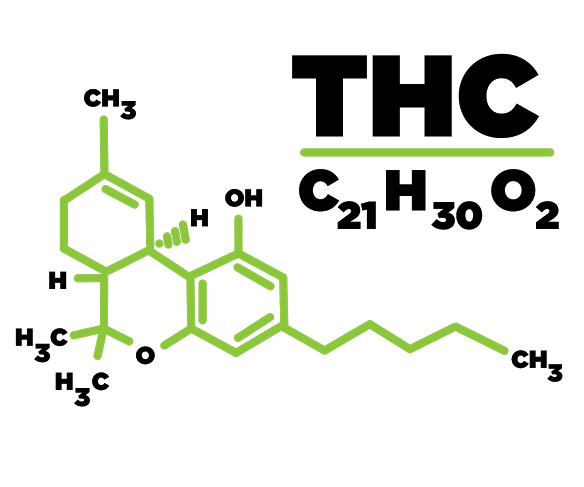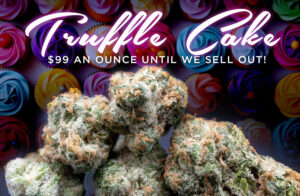[vc_row][vc_column][vc_custom_heading source=”post_title” font_container=”tag:h1|text_align:left” use_theme_fonts=”yes”][/vc_column][/vc_row][vc_row][vc_column][vc_single_image image=”284″ img_size=”full” alignment=”center”][/vc_column][/vc_row][vc_row][vc_column][vc_column_text]
What is THC?
If you’re familiar with Cannabis products you’ve probably heard about THC in one way or another, but you may not know exactly what it is. Put simply, it is one of the psychoactive compounds in marijuana and marijuana products that provide the user with their high.
How does THC affect the body?
When ingested, THC (which stands for Tetrahydrocannabinol) molecules attach to cannabinoid receptors in your brain. These receptors are involved in a number of physiological processes, such as appetite, pain sensation, memory, and mood. While it is just one of many compounds in cannabis that contribute to your “high” feeling, it is considered the most impactful. Since it’s discovery in 1964 by Dr. Raphael Mechoulam, cannabis growers and breeders have used their knowledge of THC to control the potency of the plants they grow.
How does THC Percentage affect a strain?
By cross breeding especially potent varieties of cannabis, growers are able to create an even more potent product (or alternatively, less potent). When shopping for a cannabis product, looking at the THC percentage is a good way to determine its strength. 1 gram of a plant with 24% THC, for example, will tend to get you higher than one with 17%. It’s important to note that 50 years of agricultural science and selection of strains with high percentages has made modern Marijuana strains significantly stronger than their predecessors. If you’ve taken a break in your consumption, it might be much stronger than you remember!
What other substances affect potency?
CBD is another substance contributing to the ‘high’ feeling of marijuana products and many people are interested in plants with high CBD content for specific reasons. Follow this link for more info on CBD.
Sources
http://www.leafscience.com/2014/03/16/6-surprising-facts-thc/
Howlett AC (August 2002). “The cannabinoid receptors”. Prostaglandins Other Lipid Mediat. 68-69: 619–31. doi:10.1016/S0090-6980(02)00060-6. PMID 12432948.
http://www.hightimes.com/read/simple-answer-what-are-thc-cbd[/vc_column_text][/vc_column][/vc_row]






